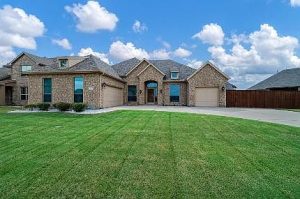
Alarm frameworks are vital for guaranteeing the security of tenants in a structure. While considering introducing alarm frameworks close by entryways, there are a few elements to consider to guarantee both security and wellbeing measures are appropriately incorporated. Port Washington locksmith service for expert assistance with their security needs.
-
Kinds of Alarm Frameworks:
Alarm frameworks come in different sorts, including:
– Smoke Alarms: Distinguish smoke particles and trigger cautions.
– Heat Indicators: detect rapid temperature rises.
– Detectors for Carbon Monoxide: Distinguish the presence of carbon monoxide gas.
– Multi-Sensor Locators: For improved precision, combine various detection techniques.
Their placement near doors can vary depending on the door’s location and function, and each type serves a distinct purpose in fire detection and early warning.
-
Position Contemplations:
While introducing alarm frameworks close to entryways, situation is basic:
– Inside Entryways: In order to provide early warning in the event of a fire, install smoke detectors or multi-sensor detectors in the hallways that lead to the exits.
– Outside Entryways: To ensure early detection and notification, install heat or smoke detectors near exterior doors in areas where fires are more likely to start, such as kitchens or utility rooms.
-
Coordination with Security Frameworks:
Coordinating alarm frameworks with security frameworks improves by and large wellbeing and security:
– Centralized Observation: Central monitoring of both security and fire alarm systems allows for prompt response and notification of emergency services.
– Savvy Frameworks: Savvy alarm frameworks can send cautions to cell phones or tablets, advising clients of potential fire dangers in any event, when they’re away from home.

-
Code and Guidelines Consistence:
Respecting local fire codes and regulations is essential:
– NFPA (Public Fire Insurance Affiliation): Keep NFPA rules for establishment and support of alarm frameworks.
– Nearby Construction regulations: Comply with nearby building regulations and guidelines in regards to the arrangement and sort of alarm frameworks required.
-
Power and Battery Reinforcement:
Guarantee alarm frameworks have solid power and battery reinforcement:
– Designed Frameworks: Straightforwardly associated with building’s electrical framework.
– Battery Reinforcement: Guarantees framework stays functional during blackouts.
-
Upkeep and Testing:
Customary support and testing are fundamental for guaranteeing alarm frameworks capability appropriately:
– Month to month Testing: Test alarms and smoke alarms month to month to guarantee they’re functional.
– Yearly Assessment: Lead a yearly investigation by a certified specialist to guarantee consistence and usefulness. A Port Washington locksmith service offers a range of solutions, from emergency lockouts to installing high-security locks.







